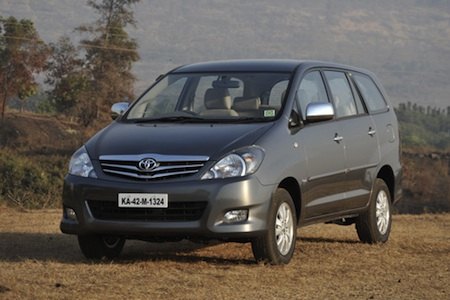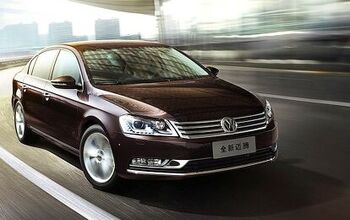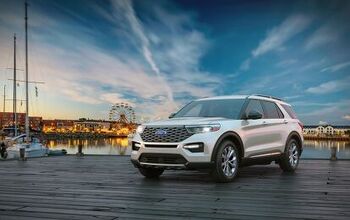Best Selling Cars Around The Globe: Toyota Experiments In Indonesia
(Before you start reading you need to play the video above – just for the music)
Over the last few weeks we have visited Cambodia, Panama, Colombia and China. Not quite sure why there is so many countries starting in C in that list… which is partly why we are now off to Indonesia.
You’ve been to Bali recently and can’t bear to hear any more about it? That’s fine, I’ve prepared 159 other countries for you to visit in my blog, and I can tell you it is sangat baik (very good), so click away!
Toyota is experimenting a little bit in Indonesia, including releasing twin models quasi-exclusively to this country under its Daihatsu brand…
A health check on the Indonesian car market gives a simple verdict: never been better. Indeed Idonesian consumers have never bought that many cars than in 2011. It was already the case in 2010 with a record 764,710 registrations, and over the first 6 months of 2011 the market is up a further 13 percent at 417,687 units.
If you haven’t been to Indonesia you probably haven’t heard about the best-selling car there. Its name is the Toyota Avanza. It is produced locally by Daihatsu (bear with me here). Daihatsu then supplies the vehicle to Toyota under a consigned production and OEM manufacturing agreement, and it is sold both under the Toyota brand as Toyota Avanza and under the Daihatsu brand as the Daihatsu Xenia.
Indonesians are huge fans of small MPVs which is good because that’s just what the Avanza/Xenia is. And when I say huge fans, I mean it. Over the first 6 months of 2011 the Toyota Avanza leads the Indonesian market with 85,040 sales or 20.4 percent share (up from 18.5 percent in 2010). It has even led the market since its launch in 2003.
But wait it doesn’t stop there. Its absolutely identical twin, the Daihatsu Xenia, comes in 2nd place with 30,963 units sold in 6 months for a solid 7.4 percent market share. Yes Sir! That is a combined market share of 27.8 percent in a growing market. That’s what we call a good bet. Toyota’s done it again!
In June these two models both improve on their already impressive figures, with the Avanza at 21.2 percent share and the Xenia at 7.8 percent, adding up to a combined market share of 29 percent.
Another Toyota model produced specifically for the region ranks third in Indonesia, it is the Toyota Innova, a larger no-frills MPV, with 4,319 sales and 6.2 percent share in June.
The Suzuki APV, yep another MPV (I told you they were fans) is 4th, up 3 spots on its 2010 ranking, with 2,599 sales and 3.7 percent in June.
And now two more Toyota twins, and again Toyota is taking advantage of its agreements with Daihatsu. Daihatsu designs and manufactures the small 4WD Terios and also supplies the vehicle to Toyota under the same type of agreement as the Toyota Avanza. The fruit of this collaboration is called the Toyota Rush or Daihatsu Terios. And here again, the Toyota version sells better in 5th place with 2,046 units sold compared to 1,860 for the Terios in 6th position.
The best-selling passenger car is only 7th and it’s the Honda Jazz with a shy 2.1 percent share of the market. I know it kind of is a mini-MPV anyway…
A 5th MPV takes the 8th spot: the Nissan Grand Livina.
More by Matt Gasnier
Latest Car Reviews
Read moreLatest Product Reviews
Read moreRecent Comments
- El scotto UH, more parking and a building that was designed for CAT 5 cable at the new place?
- Ajla Maybe drag radials? 🤔
- FreedMike Apparently this car, which doesn't comply to U.S. regs, is in Nogales, Mexico. What could possibly go wrong with this transaction?
- El scotto Under NAFTA II or the USMCA basically the US and Canada do all the designing, planning, and high tech work and high skilled work. Mexico does all the medium-skilled work.Your favorite vehicle that has an Assembled in Mexico label may actually cross the border several times. High tech stuff is installed in the US, medium tech stuff gets done in Mexico, then the vehicle goes back across the border for more high tech stuff the back to Mexico for some nuts n bolts stuff.All of the vehicle manufacturers pass parts and vehicles between factories and countries. It's thought out, it's planned, it's coordinated and they all do it.Northern Mexico consists of a few big towns controlled by a few families. Those families already have deals with Texan and American companies that can truck their products back and forth over the border. The Chinese are the last to show up at the party. They're getting the worst land, the worst factories, and the worst employees. All the good stuff and people have been taken care of in the above paragraph.Lastly, the Chinese will have to make their parts in Mexico or the US or Canada. If not, they have to pay tariffs. High tariffs. It's all for one and one for all under the USMCA.Now evil El Scotto is thinking of the fusion of Chinese and Mexican cuisine and some darn good beer.
- FreedMike I care SO deeply!








































Comments
Join the conversation
How much are cars taxed in Indonesia? I live north of them and here a Civic sells for more than a starting Camry in the US. A Camry here is worth more than a glorious E-klasse there. Which is just as well. People here are generally undisciplined, anyway. The doosh mobiles are the Toyota Fortuner and Mitsu MOntero. Quite pathetic, if you ask me. lolz
That's why we American car companies did not sell their American-made cars here, except for few exotics status symbols (Chrysler 300C and stuff). But they have factories somewhere where they're subject to much lower taxes. ASEAN free trade agreement meant only 5% taxes on countries imported between members, and GM has factories in THailand, not to mention Korea, while Ford has one in Thailand and Philippines. The American carmakers definitely did not import cars directly from the U.S. Not only their steering wheel is in the wrong place, American-build cars are generally not what would sell in Southeast Asia. Not to mention the high cost of shipping from the U.S. That's why U.S. build cars are sold only in the Americas, Canada and Central/South America. Eldard, I think it's condescending(though accurate) to say that the automotive standard here is much lower than that of Europe or North America. After all, these advanced Western countries has been around for much longer, have had much more highly developed economy and standard of living. Not to mention in the case of some European countries, they got there by plundering less developed nations like us back in the colonial era! In fact, if you look at the per-capita income in here, the number and degree of niceness of cars around here is quite surprising.